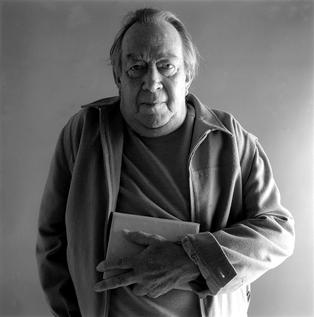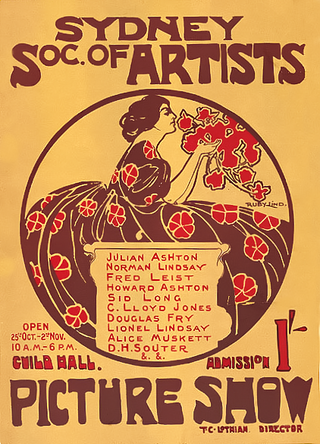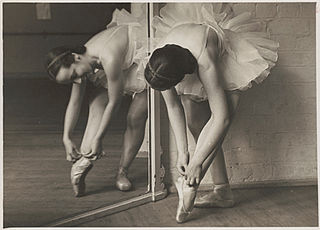
The Merioola Group, also known as the Sydney Charm School, was a group of Australian artists active in Sydney during the 1940s and early 1950s. The group was named after Merioola, a Woollahra mansion where many of its members lived.

The Merioola Group, also known as the Sydney Charm School, was a group of Australian artists active in Sydney during the 1940s and early 1950s. The group was named after Merioola, a Woollahra mansion where many of its members lived.

The group took its name from Merioola, a Victorian-era mansion converted into a boarding house in the Sydney suburb of Woollahra, managed from 1941 by Chica Edgeworth Lowe. Lowe consciously encouraged artists, dancers, writers and theatre people to take up residence, forming the bohemian artistic centre of Sydney in the immediate post-war years.
Tenants included the European-born and trained artists Arthur Fleischmann (sculptor), Roland Strasser, Peter Kaiser, Michael Kmit and George de Olszanski. Others, such as Donald Friend, Edgar Ritchard (artist and costume designer), Loudon Sainthill (later to become one of the most prominent theatre designers of the 20th century) and his life partner Harry Tatlock Miller (writer, critic and curator and subsequently the director of the Redfern Galleries, London), had lived and worked overseas. [1] Others connected with the visual arts included photographer Alec Murray, painters Justin O'Brien, Mary Edwards, Frank Andrews, artist and later noted costume designer Jocelyn Rickards. Other tenants included dancers Alison Lee, Darya Collin, Beatrijs Vitringa and Edmee Monod, author and historian Hector Bolitho, architect George Beiers, civil engineer William Pierre Beiers, mathematician and astronomer John Sidgewick, musicians John and Norma Bannenberg, and many others. [2]
When in Sydney, Ballet Rambert dancers often spent time at Merioola, where many theatrical and literary collaborations took place. [3]
Although there was no common style or 'movement' at Merioola, it could be said that its artists were more interested in art as a light-hearted and poetic expression of the spirit and less interested in art as a progressive force. Many of the group had spent long years in the armed services or had been displaced persons as a result of the war in Europe. [2]
Artists under the label of the "Merioola Group" exhibited in both Sydney (November 1947) and Melbourne in 1947. [2]

The "Sydney Charm School" was another term used synonymously to refer to the Merioola group of artists [4] because they shared a light-hearted, decorative element in their work. The Sydney Charm School included painters William Dobell, Russell Drysdale, Donald Friend, Lloyd Rees, Justin O'Brien, Jean Bellette, Paul Haefliger, David Strachan, Sali Herman, Eric Wilson, Mary Edwell-Burke, Margaret Olley, Roland Strasser, Michael Kmit, Peter Kaiser, Harry Tatlock Miller, Jocelyn Rickards, Adrian Feint, Arthur Fleischmann, Eileen Haxton and applied artists Wallace Thornton, Loudon Sainthill and Wolfgang Cardamatis. [5] [6] [7]
Paul Haefliger first used the phrase "Charm School" in 1948 in a review of the work of Jocelyn Rickards. [5] Titled ‘Artist Relies on Charm’, Haefliger's review states that Rickard's work "certainly belongs to the charm-school and, as a substitute, it will carry this young artist quite a distance". [8]
Later, the name "The Sydney Charm School" was disparagingly used by Australian Art critic Robert Hughes to describe the Merioola group of artists. He believed that the art made in Sydney in the period circa 1940–1955 was less worthy than the works produced in Melbourne as it was decorative and overly romantic, unlike the "truthful vital energy of Melbourne". [9] Regarding the difference in art expressions between Sydney and Melbourne at that time Donald Friend commented: [7]
Melbourne during the war and after the war went in quite heavily for social realism, which is a kind of expression of resentment against being poor and other people being poor. Sydney artists were poor. They enjoyed themselves in their attics. They were drinking plonk and eating crusts of bread... the usual thing... We didn't think of resenting it. We had a bloody marvellous time and we did all sorts of interesting things. Sydney extroverted sort of things – plenty of laughter and plenty of laughter in the paintings.
By its ad hoc nature the Merioola Group were destined not to last, and by the mid-1950s its original members had left or were on the point of leaving, most overseas. But while it lasted Merioola provided a bohemian atmosphere, described by its chronicler Christine France:
In post-war Sydney, Merioola was probably the most exciting place to live. Justin O'Brien said, "I've never laughed so much, not at people but with people". Merioola was always full of visitors; both local and overseas artists would call in [and] the mix of creative people at Merioola often led to interdisciplinary activities. The dancers would pose for [Arthur] Fleischmann or Alec Murray. The artists would make sets for theatrical activities. And Harry [Tatlock Miller] and Loudon [Sainthill] and Alec [Murray] would combine their talents as editor, designer and photographer for Ballet Rambert and Old Vic programs. [10]
{{cite book}}: CS1 maint: multiple names: authors list (link)Merioola and After (Christine France, 1986)
Janet Dawson MBE is an Australian artist who was a pioneer of abstract painting in Australia in the 1960s, having been introduced to abstraction during studies in England while she lived in Europe 1957–1960 She was also an accomplished lithographic printer of her own works as well as those of other renowned Australian artists, a theatre-set and furniture designer. She studied in England and Italy on scholarships before returning to Australia in 1960. She won the Art Gallery of New South Wales Archibald Prize in 1973 with the portrait of her husband, Michael Boddy Reading. She has exhibited across Australia and overseas, and her work is held in major Australian and English collections. In 1977 she was awarded an MBE for services to art.

Donald Stuart Leslie Friend was an Australian artist and diarist who lived much of his life overseas. He has been the subject of controversy since the posthumous publication of diaries in which he wrote about how he sexually abused children during his time in Bali.
Dame Catherine Margaret Mary Scott, was a South African-born pioneering ballet dancer who found fame as a teacher, choreographer, and school administrator in Australia. As the first director of the Australian Ballet School, she is recognised as one of the founders of the strong ballet tradition of her adopted country.

Mervyn Napier Waller CMG OBE was an Australian muralist, mosaicist and painter in stained glass and other media. He is perhaps best known for the mosaics and stained glass for the Hall of Memory at the Australian War Memorial, Canberra, completed in 1958. However, Melbourne has been described as "a gallery of Napier Waller’s work", as eleven monumental murals by Waller are on display in the central business district and at the University of Melbourne’s main campus.
Janet Karin OAM was born in Perth, Australia in 1938. She became one of Australia's leading dancers in 1956, and has danced with the Victorian Ballet Guild, Borovansky Ballet, and was a founding member of The Australian Ballet. She is a Nationally and Internationally recognised dance educator, and is currently the Head of Artistic Studies and Kinetic Educator for the Australian Ballet School in Melbourne, Australia.
Michael Annals was a theatrical scenic and costume designer.
Vladimir Meškėnas was an Australian expressionist painter and portraitist in oil and pastel, who has been a frequent Archibald Prize finalist.

Michael Kmit was a Ukrainian painter who spent twenty-five years in Australia. He is notable for introducing a neo-Byzantine style of painting to Australia, and winning a number of major Australian art prizes including the Blake Prize (1952) and the Sulman Prize. In 1969 the Australian artist and art critic James Gleeson described Kmit as "one of the most sumptuous colourists of our time".
Motley Theatre Design Course is a one-year independent theatre design course in London. It was founded at Sadler's Wells Opera in 1966.
Arthur Fleischmann was a Slovak-born, London-based sculptor, who pioneered the use of perspex in sculpture. He spent time in Bali, and in Australia, where he was at the centre of the Merioola Group, before settling in London.
Loudon Sainthill was an Australian artist and stage and costume designer. He worked predominantly in the United Kingdom, where he died. His early designs were described as 'opulent', 'sumptuous' and 'exuberantly splendid', but there was also a 'special quality of enchantment, mixed so often with a haunting sadness'.
Paul Haefliger was an abstract painter, art critic, writer and printmaker. He was a major figures in the Sydney art world in the 1940s and 1950s and as art critic for Art in Australia and the Sydney Morning Herald he helped mould the standards of Australian art during this period.
Jocelyn Rickards was an Australian artist and costume designer.

The Society of Artists was an influential Sydney based group of progressive artists who staged annual exhibitions from 1895 to the 1960s. The Society included many of Australia's best artists of the time. It lapsed during the mid 1960s.

Jean Bellette was an Australian artist. Born in Tasmania, she was educated in Hobart and at Julian Ashton's art school in Sydney, where one of her teachers was Thea Proctor. In London she studied under painters Bernard Meninsky and Mark Gertler.
Gallery A was a mid-century Australian gallery that exhibited contemporary Australian art. It was established in 1959 at 60 Flinders Lane, Melbourne, and then relocated to 275 Toorak Road., South Yarra. A second Gallery A venue was opened and run concurrently at 21 Gipps Street, Paddington in Sydney from 1964, and a third in Canberra. The Sydney business largely displaced the Melbourne gallery, which also closed in 1970, and continued until 1983. Its founder was Max Hutchinson and other directors during the history of the gallery at its three venues included Clement Meadmore, James Mollison, Janet Dawson and Ann Lewis.

Rachel Cameron was an Australian ballet dancer and teacher. She was one of the leading dancers in early Australian ballet in the 1940s, performing with the Borovansky and Kirsova ballet companies, and was one of the first ballet dancers in Australia to reach the rank of principal. After emigrating to Great Britain she was an inspirational educator of ballet teachers at the Royal Academy of Dance in London for over forty years. In 2010, she received the Royal Academy of Dance's prestigious Queen Elizabeth II Coronation Award in recognition of her outstanding services to ballet.
Shay Docking (1928–1998) was an Australian artist who specialised in landscape drawing.
The Kirsova Ballet was the first professional Australian ballet company. It was founded by prima ballerina Hélène Kirsova in 1941. Initially the leading performers were dancers who had stayed in Australia following the 1938/1939 tour of the Covent Garden Russian Ballet, but they were supported by talented young Australian dancers promoted from Kirsova's ballet school in Sydney. These local performers soon led the troupe and appeared in several seasons in Sydney, Melbourne, Adelaide and Brisbane. The company also supported Australian composers, musicians, artists and designers in producing new ballets choreographed by Kirsova. Struggling under wartime restrictions, unable to tour abroad, and later suffering creative differences with the country's main theatre owners, the company's prominence was brief. It closed in 1945 having been the pioneer of a genuine Australian ballet tradition. Its influence on Australian ballet was significant.
Heather B. Swann is an Australian contemporary artist known for her expressive surrealist sculptural objects, often combined with installation, performance and drawings. Her work draws on artisanal traditions, carving, modelling and tailoring materials to stretch, twist and manipulate her creaturely forms that are at once whimsical and darkly ambiguous. She has received numerous recognition for her work, and her pieces are held in prominent collections, including the National Gallery of Australia, Dubbo Regional Gallery and the Ian Potter Museum of Art.
" My work is a way of holding on to the world. My sculptures and drawings are figurative and modernist in expression, with curved forms, an insistent use of black and a marked surrealist accent."